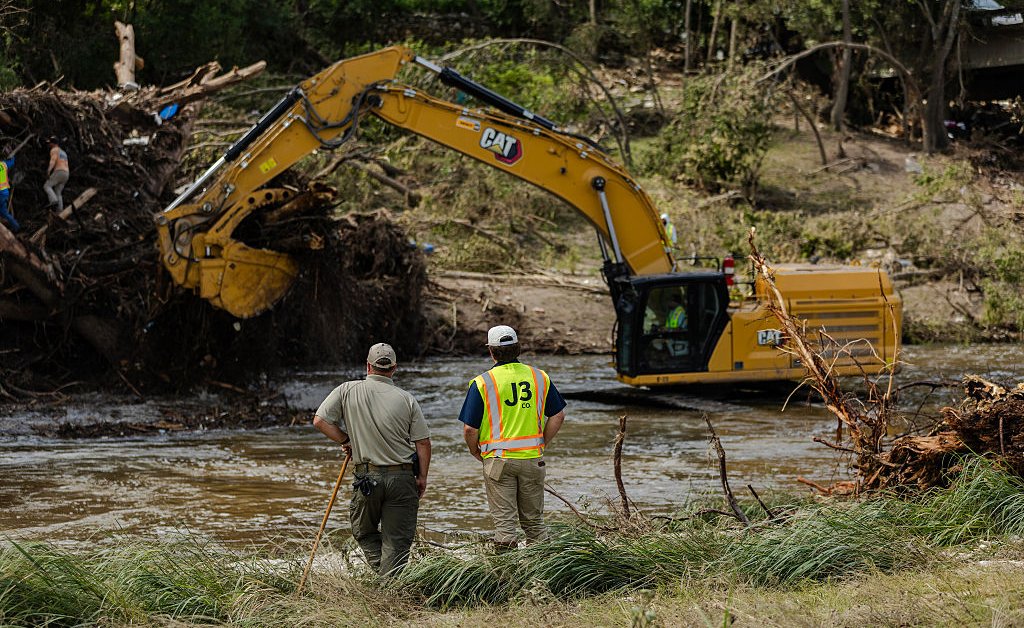Texas Floods: Navigating the Deluge of Misinformation in the Wake of Disaster
The devastating flash floods that recently ravaged central Texas have left a trail of destruction and heartbreak in their wake. As rescue efforts continue and communities grapple with the immense loss, another insidious threat emerges: the spread of misinformation and conspiracy theories. In times of crisis, when information is scarce and anxieties run high, false narratives can easily take root and proliferate, hindering recovery efforts and exacerbating the suffering of those affected.
The digital age, while offering unprecedented access to information, has also created a fertile ground for the rapid dissemination of misinformation. Social media platforms, in particular, can become echo chambers where unsubstantiated claims and manipulated images gain traction, often outpacing verified information from credible sources. Nathan Walter, an associate professor of communication studies at Northwestern University, emphasizes that this heightened state of attention and the urgent need for updates creates an environment ripe for exploitation by malicious actors or those unknowingly sharing falsehoods. This “infodemic” can have tangible, negative consequences, impacting access to aid, creating unnecessary panic, and even inciting violence.
One of the most concerning aspects of misinformation during disasters is its potential to disrupt essential aid and recovery efforts. Following Hurricane Helene last fall, false information regarding FEMA aid eligibility created widespread confusion among victims, hindering their ability to access much-needed support. Similarly, in the aftermath of the Texas floods, conspiracy theories linking the disaster to cloud seeding have not only sown distrust but also led to acts of violence. Such unfounded claims divert attention and resources away from genuine relief efforts, compounding the challenges faced by communities struggling to rebuild.
The proliferation of fake images and videos further complicates the situation. In the wake of the Los Angeles wildfires earlier this year, fabricated images of the Hollywood sign ablaze circulated widely online, despite the iconic landmark being untouched by the flames. These visual manipulations prey on emotional vulnerabilities, sensationalizing tragedies and amplifying fear and anxiety. The spread of such misinformation can also obstruct the work of first responders and emergency services, who must contend with unnecessary distractions and potentially dangerous situations created by false reports.
Combating the spread of misinformation requires a multi-pronged approach. Individuals must become more discerning consumers of information, critically evaluating the sources and content they encounter online. Walter advises adopting a more cautious approach to online sharing, emphasizing the importance of verifying information before amplifying it. Building a network of trusted news sources and consulting with experts in the field can help individuals navigate the deluge of information and identify credible updates. Fact-checking websites and organizations also play a crucial role in debunking false claims and providing accurate information.
Furthermore, social media platforms bear a responsibility to curb the spread of misinformation on their networks. Improving algorithms to prioritize credible sources, implementing stricter content moderation policies, and providing users with tools to identify and report false information are essential steps in mitigating the impact of online misinformation. However, the evolving nature of misinformation tactics, particularly with the rise of AI-generated content, presents an ongoing challenge. Walter acknowledges the difficulty of keeping pace with these advancements, describing the effort as “trying to capture a moving target that…gets a little bit more sophisticated in escaping us all the time.” The fight against misinformation requires constant vigilance and adaptation, both from individuals and from the platforms that facilitate the spread of information. In the face of natural disasters, access to accurate and reliable information is not just a matter of convenience; it can be a matter of life and death.


